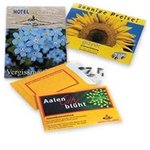Digital
Digital Printing is the reproduction of digital images on a physical surface, such as common or photographic paper, cardboard, film, cloth, plastic, vinyl, magnets, or labels – all possible with various desktop and industrial sized printers. The process of Digital Printing allows for blends of colour and tone within your designs instead of resorting to individual flat, solid colours. Digital Printing requires an image resolution of at least 300dpi; anything less will result in a poor quality print and will therefore not be accepted.
Image Type: Vector or Bitmap
File Formats: EPS, AI, PDF, Hi-Res (300dpi) JPG or Hi-Res (300dpi)TIFF
Colours: CMYK – Full Colour
Litho
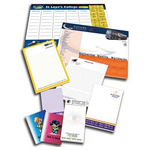 Much in same way as Digital Printing, Litho Printing allows for full colour prints to various physical surfaces. Litho Printing enables you to personalise many desktop promotional products where large multiple runs are necessary. High resolution artwork is required again for this process (minimum of 300dpi).
Much in same way as Digital Printing, Litho Printing allows for full colour prints to various physical surfaces. Litho Printing enables you to personalise many desktop promotional products where large multiple runs are necessary. High resolution artwork is required again for this process (minimum of 300dpi).
Image Type: Vector or Bitmap
File Formats: EPS, AI, PDF, Hi-Res (300dpi) JPG or Hi-Res (300dpi) TIFF
Engrave
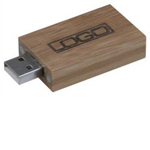 Engraving is a process that requires the incising of a design onto a hard, usually flat surface, by cutting grooves into it. Originally done by hand, this process is now performed using lasers when branding large quantities of promotional products is required. This process does not usually allow for colour, relying on the colour of the product itself to show through.
Engraving is a process that requires the incising of a design onto a hard, usually flat surface, by cutting grooves into it. Originally done by hand, this process is now performed using lasers when branding large quantities of promotional products is required. This process does not usually allow for colour, relying on the colour of the product itself to show through.
Image Type: Vector
File Formats: EPS, AI, PDF
Colours: N/A
Screen Printing
 Screen Printing is a printmaking process based on the creation of individual screens for each colour present in a piece of artwork. Artwork for Screen Printing ideally needs to consist of vector images and outlined text so that the separation of each colour is possible. Each screen made then acts as a layer, with each layer printed in order to build up a complete image.
Screen Printing is a printmaking process based on the creation of individual screens for each colour present in a piece of artwork. Artwork for Screen Printing ideally needs to consist of vector images and outlined text so that the separation of each colour is possible. Each screen made then acts as a layer, with each layer printed in order to build up a complete image.
Image Type: Vector
File Formats: EPS, AI, PDF
Colours: Spot Colours – Pantone References Required
Vinyl Skins

Skins are an innovate product and skins4things skins are made in the UK utilising the latest material, printing and cutting technology; Premium patented 3MTM adhesive vinyl. High quality printing using a 4 colour process. Images can be photographic or vector art. Skins are laminated to lock in the colour and protect the device from everyday scuffs and scrapes. Skins are precision cut for individual devices so they follow the unique contours of each device creating a second skin. Skins are very easy for you or your customers to apply; no creases or air bubbles. Importantly skins are easy to take off. They just peel off leaving no residue or marks on the device
Image Type: Vector or Bitmap
File Formats: EPS, AI, PDF
File Formats: EPS, AI, PDF, Hi-Res (300dpi) JPG or Hi-Res (300dpi) TIFF
Emboss
 Embossing is a process that creates an impression of a design onto a surface that allows for marks to remain once the pressure is released. There are 2 typical varieties of Embossing: Blind Embossing – The design will remain the colour of the product it’s being embossed on; Foil Block – Once a design is embossed it’s filled with a metallic paint such as gold or silver.
Embossing is a process that creates an impression of a design onto a surface that allows for marks to remain once the pressure is released. There are 2 typical varieties of Embossing: Blind Embossing – The design will remain the colour of the product it’s being embossed on; Foil Block – Once a design is embossed it’s filled with a metallic paint such as gold or silver.
Image Type: Vector
File Formats: EPS, AI, PDF
Transfer
 Transfer printing is a method of applying an image to a curved or uneven surface. It is most commonly used for printing onto porcelain, but can also be applied to various other surfaces, such as cloth. Transfer Printing allows for designs to include complete digital images (full colour photography) along with vector and/or high resolution bitmap images, which can then be applied to a number of different products.
Transfer printing is a method of applying an image to a curved or uneven surface. It is most commonly used for printing onto porcelain, but can also be applied to various other surfaces, such as cloth. Transfer Printing allows for designs to include complete digital images (full colour photography) along with vector and/or high resolution bitmap images, which can then be applied to a number of different products.
Image Type: Vector or Bitmap
File Formats: EPS, AI, PDF, Hi-Res (300dpi) JPG or Hi-Res (300dpi)TIFF
Colours: CMYK – Full Colour
Embroider
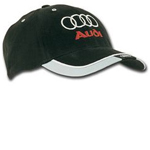 The process of Embroidery allows for artwork to be recreated by decorating fabric or other materials with designs stitched in strands of thread or yarn using a needle – specialist equipment used for mass production. Pantone References can be provided, however embroiderers use a different colour code based on the threads used, so colours are matched as close as possible. It’s best to avoid blends of colour when creating an embroidery and stick to using solid colours.
The process of Embroidery allows for artwork to be recreated by decorating fabric or other materials with designs stitched in strands of thread or yarn using a needle – specialist equipment used for mass production. Pantone References can be provided, however embroiderers use a different colour code based on the threads used, so colours are matched as close as possible. It’s best to avoid blends of colour when creating an embroidery and stick to using solid colours.
Image Type: Vector
File Formats: EPS, AI, PDF
Colours: Spot Colours – Pantone References Required
Mould
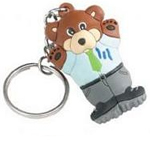 Moulding is a process used for products that require the use of various materials to make bespoke items. Soft PVC and recycled plastic, for example, can be set within custom moulds to produce various products. This process can only be achieved successfully with vector-based artwork.
Moulding is a process used for products that require the use of various materials to make bespoke items. Soft PVC and recycled plastic, for example, can be set within custom moulds to produce various products. This process can only be achieved successfully with vector-based artwork.
Image Type: Vector
File Formats: EPS, AI, PDF
Colours: Spot Colours – Pantone References Required

